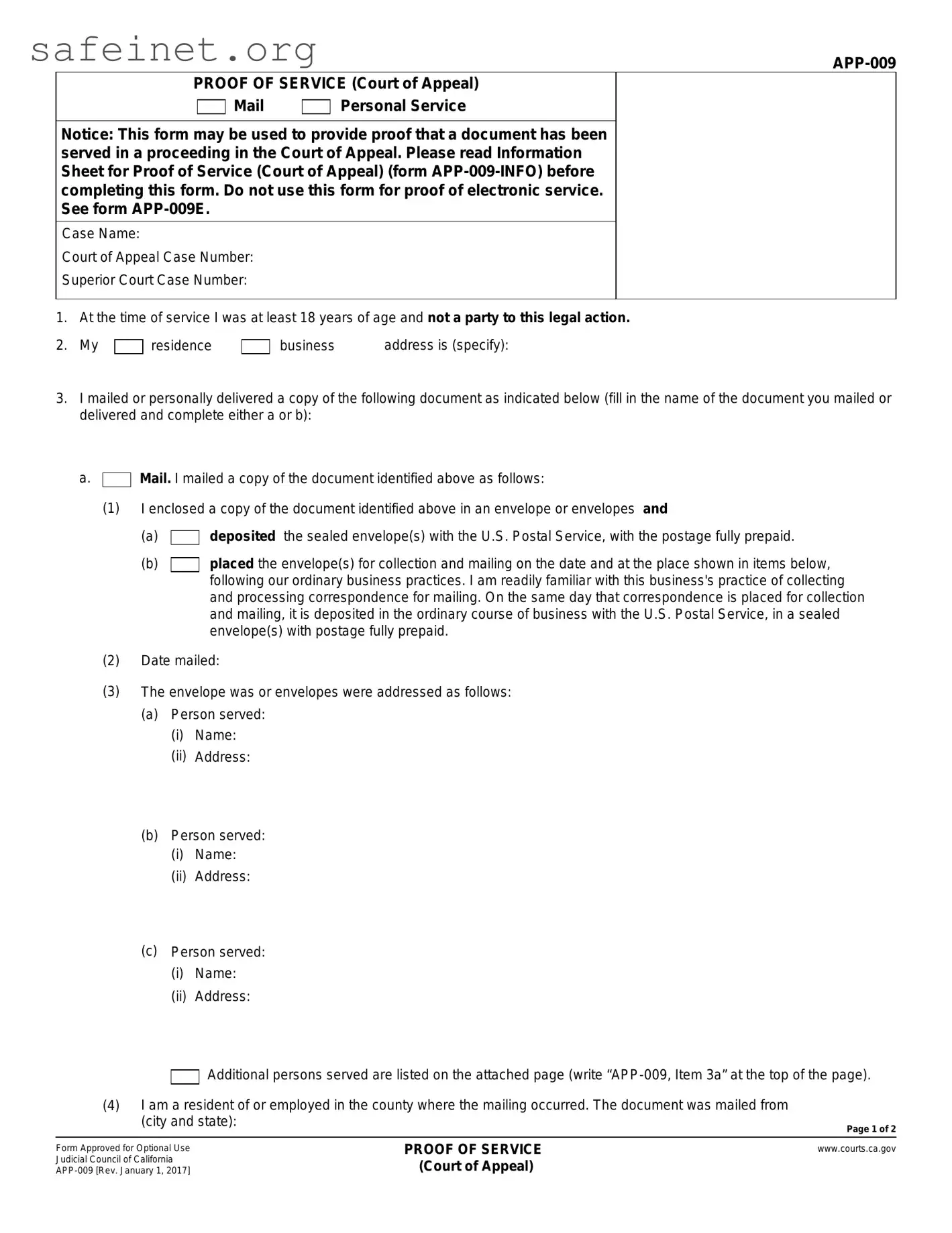The Proof of Service form used in court proceedings can be compared to the Certificate of Service, another key document in legal contexts. Similar to the Court Proof Service form, a Certificate of Service provides verification that a legal document has been served to the relevant parties. The Certificate typically outlines the method of service, whether it was by mail or personal delivery, and requires the server to affirm their familiarity with the service process. In both documents, accuracy and completeness are crucial to ensure that all necessary parties have received the appropriate legal notices.
Another document akin to the Court Proof Service form is the Summons. A Summons serves to notify the defendant of a lawsuit against them and informs them of their obligation to respond. Like a Proof of Service, the Summons requires demonstration or acknowledgment of the service method. Both documents are foundational steps in a legal proceeding, helping to ensure that all parties are informed and have the opportunity to engage in the legal process.
The Affidavit of Service also shares similarities with the Court Proof Service form. This document is a sworn statement, often by a process server, confirming that service was successfully completed. The Affidavit outlines the details of how and when the documents were served, much like the Proof of Service. Both documents serve to establish a record of communication and ensure compliance with procedural rules in legal actions.
The Proof of Delivery notice is another document that serves a similar purpose. It provides evidence that a specific document was delivered to a party. While the Court Proof Service form focuses more specifically on legal documents served within court contexts, the Proof of Delivery can be utilized in various situations, including contracts, important notices, or general correspondence. Both documents help establish that a party received critical information.
Also related is the Service of Process document. This is a legal procedure for notifying people of their involvement in a court case. Serving legal papers to defendants or other parties can be documented with either the Service of Process form or the Court Proof Service form. Both highlight the importance of following proper procedures to ensure that all parties are duly informed and can participate in the proceedings.
The Return of Service form is similar in that it documents the completion of service. It typically includes details about the served documents and signatures from the serving individual, verifying that the service was successful. These forms serve a crucial role in demonstrating compliance with the law, and both ensure that due process is upheld for all parties involved.
The Notice of Motion and Motion is another document that overlaps in function with the Court Proof Service form. This legal document informs parties that a motion will be presented in court. Bringing attention to the scheduled motions also requires providing proof that the notice was adequately served to the involved parties, similar to the requirements of the Proof of Service form.
The Request for Admission document shares a similar purpose as well. Often in discovery, a Request for Admission is served to another party to confirm or deny the truth of specific statements. Ensuring that all parties receive this document and understand its implications is as critical as any proof of service. Both documents emphasize the importance of open communication between parties to facilitate the legal process.
Lastly, the Response to Demand for Production similarly aligns with the Court Proof Service form. This document responds to a request for documents or information made during discovery. The Response must often be served to other parties, necessitating proof of delivery and adherence to procedural rules, showcasing the shared goal of both documents in maintaining legal process integrity.



 Mail
Mail






 Additional persons served are listed on the attached page
Additional persons served are listed on the attached page 

